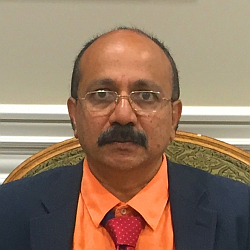Remote Sensing: 15th Anniversary
A special issue of Remote Sensing (ISSN 2072-4292).
Deadline for manuscript submissions: closed (15 February 2025) | Viewed by 66021
Special Issue Editor
Interests: hyperspectral remote sensing, remote sensing expertise in a number of areas including: (a) global croplands, (b) agriculture, (c) water resources, (d) wetlands, (e) droughts, (f) land use/land cover, (g) forestry, (h) natural resources management, (i) environments, (j) vegetation, and (k) characterization of large river basins and deltas
Special Issues, Collections and Topics in MDPI journals
Special Issue Information
Dear Colleagues,
As 2024 will mark the 15th anniversary of the Remote Sensing (ISSN 2072-4292) journal, this milestone is an opportune moment for us to take pride in our many achievements over the past 15 years.
Remote sensing and geospatial science are indispensable for monitoring and analyzing surface elements at various scales, both at community and global levels. In particular, new knowledge mining and scientific discovery through remote sensing is especially critical in the era of increasing proliferation of massive remote sensing data and spatio-temporal big data.
This Special Issue collates the latest research results and progress in the field of remote sensing, including new technologies, breakthroughs in this area, and its wide-ranging applications in forests, oceans, agriculture, the atmosphere, geology, etc. Both original research papers and comprehensive literature reviews with unique scientific insights are welcome.
Dr. Prasad S. Thenkabail
Guest Editor
Manuscript Submission Information
Manuscripts should be submitted online at www.mdpi.com by registering and logging in to this website. Once you are registered, click here to go to the submission form. Manuscripts can be submitted until the deadline. All submissions that pass pre-check are peer-reviewed. Accepted papers will be published continuously in the journal (as soon as accepted) and will be listed together on the special issue website. Research articles, review articles as well as short communications are invited. For planned papers, a title and short abstract (about 100 words) can be sent to the Editorial Office for announcement on this website.
Submitted manuscripts should not have been published previously, nor be under consideration for publication elsewhere (except conference proceedings papers). All manuscripts are thoroughly refereed through a single-blind peer-review process. A guide for authors and other relevant information for submission of manuscripts is available on the Instructions for Authors page. Remote Sensing is an international peer-reviewed open access semimonthly journal published by MDPI.
Please visit the Instructions for Authors page before submitting a manuscript. The Article Processing Charge (APC) for publication in this open access journal is 2700 CHF (Swiss Francs). Submitted papers should be well formatted and use good English. Authors may use MDPI's English editing service prior to publication or during author revisions.
Benefits of Publishing in a Special Issue
- Ease of navigation: Grouping papers by topic helps scholars navigate broad scope journals more efficiently.
- Greater discoverability: Special Issues support the reach and impact of scientific research. Articles in Special Issues are more discoverable and cited more frequently.
- Expansion of research network: Special Issues facilitate connections among authors, fostering scientific collaborations.
- External promotion: Articles in Special Issues are often promoted through the journal's social media, increasing their visibility.
- e-Book format: Special Issues with more than 10 articles can be published as dedicated e-books, ensuring wide and rapid dissemination.
Further information on MDPI's Special Issue policies can be found here.





